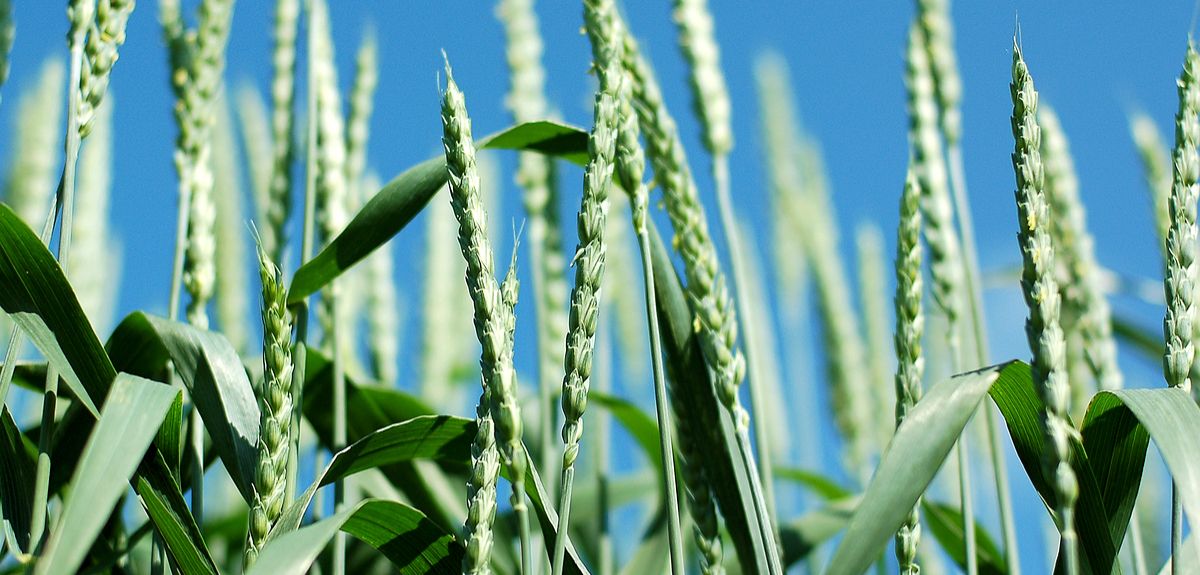
Image credit: Shutterstock
Seeding a new 'Green Revolution'
Researchers at the University of Oxford and the Chinese Academy of Sciences have discovered a new gene that improves the yield and fertilizer use efficiency of cereal crops such as wheat and rice.
The worldwide 20th century ‘Green Revolution’, which saw huge year-by-year increases in global cereal grain yields, was fueled by the development by plant breeders in the 1960s of new high-yielding dwarfed varieties known as Green Revolution Varieties (GRVs).
These dwarfed GRVs remain predominant all over the world in today’s wheat and rice crops. Because they are dwarfed, with short stems, GRVs devote relatively more resources than tall plants to growing grain rather than stem, and are less susceptible to yield losses from wind and rain damage. However, growth of GRVs requires farmers to use large amounts of nitrogen-containing fertilizers on their fields. These fertilizers are costly to farmers and cause extensive damage to the natural environment. Development of new GRVs combining high yield with reduced fertilizer requirement is thus an urgent global sustainable agriculture goal.
A major new study published in the journal Nature, led by Professor Xiangdong Fu from the Chinese Academy of Sciences’ Institute of Genetics and Developmental Biology, and Professor Nicholas Harberd from the Department of Plant Sciences at the University of Oxford, part-funded by the BBSRC-Newton Rice Initiative, has for the first time discovered a gene that can help reach that goal.
Comparing 36 different dwarfed rice varieties, the study identified a novel natural gene variant that increases the rate at which plants incorporate nitrogen from the soil. The discovered gene variant increases the amount in plant cells of a protein called GRF4. GRF4 is a ‘gene transcription factor’ that stimulates the activity of other genes – genes that themselves promote nitrogen uptake and assimilation.
Professor Harberd said: ‘Discovering such a major regulator of plant nitrogen incorporation was exciting in itself. But we were even more excited to then discover that GRF4 has a yet broader role. Plants grow by the coordinated metabolic incorporation of matter from the environment. We discovered that GRF4 coordinates plant incorporation of nitrogen from the soil with the incorporation of carbon from the atmosphere. While such overall coordinators of plant metabolism have long been known to exist, their molecular identity had previously remained unknown, and our discovery is therefore a major advance in our understanding of how plants grow.’
In dwarf GRVs the promotive metabolic coordinating activity of GRF4 is inhibited by a growth-repressing protein called DELLA. This inhibition reduces the ability of GRVs to incorporate nitrogen from the soil, and is the reason why farmers need to use high fertilizer levels to obtain high GRV yields.
Professor Harberd said: ‘We reasoned that tipping the GRF4-DELLA balance in favor of GRF4 might reduce the need for high fertilizer levels in GRV cultivation. To our delight, we found that increasing GRF4 levels caused an increase in the grain yields of both rice and wheat GRVs, especially at low fertilizer input levels.’
The researchers say GRF4 should now become a major target for plant breeders in enhancing crop yield and fertilizer use efficiency, with the aim of achieving the global grain yield increases necessary to feed a growing world population at reduced environmental cost.
Professor Harberd added: ‘This study is a prime example of how pursuing fundamental plant science objectives can lead rapidly to potential solutions to global challenges. It discovers how plants coordinate their growth and metabolism, then shows how that discovery can enable breeding strategies for sustainable food security and future new green revolutions.’